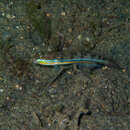tr
kırıntılardaki isimler


Die Acanthomorpha (oder Acanthomorphata bei E. O. Wiley & G. David Johnson (2010) u. R. Betancur-R. et al. (2017)) sind eine Gruppe der Echten Knochenfische (Teleostei), zu der etwa 18.100 Fischarten,[1] das sind über 60 % der rezenten Knochenfischarten, etwa ein Drittel aller Wirbeltierarten und über 300 Fischfamilien, gehören.
Die Acanthomorpha zeigen eine erstaunliche Vielfalt an Körperformen, an Skelett- und Weichteilanatomie, Größe, Lebensraum, Physiologie und Verhalten. Sie sind in den meisten aquatischen Lebensräumen zu Hause, in der Tiefsee ebenso wie in Bergbächen, in Quellen inmitten von Wüsten und in Höhlengewässern. Zu ihnen gehören die längsten (Regalecus glesne mit bis zu 8 Metern), die schwersten (Mondfisch mit 2,3 Tonnen) und einige der kleinsten (Schindleria mit 7,9 mm) Knochenfische.
Zu den Synapomorphien der Acanthomorpha zählen echte, unsegmentierte Rücken- und Afterflossenstacheln (fehlen bei vielen Dorschartigen, den meisten Glanzfischen und vielen „Barschartigen (Perciformes)“) und ein Rostralknorpel, der für die Vorstreckbarkeit des Prämaxillare sorgt. Außerdem unterscheiden sie sich durch die Anatomie der Bänder in ihrem Kieferskelett und der Wirbel sowie durch Merkmale ihres Beckens und des Schwanzflossenskeletts von ursprünglicheren Fischgruppen. Sehr charakteristisch ist das dreiteilige Hinterhauptsgelenk: neben der Pfanne für den ersten Chorda-Kern (im Basioccipitale) sind zwei kleinere Köpfe im paarigen Exoccipitale vorhanden.
Die Acanthomorpha(ta) umfassen die Ordnung der Glanzfischartigen (Lampriformes), deren Schwestergruppe Paracanthopterygii (inkl. Dorschartige (Gadiformes)) und alle weiter entwickelten Knochenfische, die die Mehrzahl der Arten stellen.
Das folgende Kladogramm zeigt die systematische Stellung der Acanthomorpha(ta):
NeoteleosteiTiefseequappenartige (Ateleopodiformes)
Eidechsenfischverwandte (Aulopiformes)
Laternenfischartige (Myctophiformes)
Glanzfischartige (Lampriformes)
Paracanthopterygii (Barschlachsartige, Petersfischartige, Stylephorus chordatus, Dorschartige)
Bartfischartige (Polymixiiformes)
Schleimkopfartige (Beryciformes) und Trachichthyiformes
Soldaten- und Husarenfische (Holocentrimorphaceae)
Barschverwandte (Percomorphaceae)
Die Acanthomorpha lassen sich fossil seit der frühen Oberkreide (Cenomanium) nachweisen. Fossilien aus dieser Zeit wurden unter anderem in Nordamerika, Israel und Marokko gefunden. Fossile Gattungen sind unter anderem Ctenothrissa, Aipichthys, Aipichthyoides, Asineops, Aulolepis, Spinocaudichthys und Xenyllion.
Die Acanthomorpha (oder Acanthomorphata bei E. O. Wiley & G. David Johnson (2010) u. R. Betancur-R. et al. (2017)) sind eine Gruppe der Echten Knochenfische (Teleostei), zu der etwa 18.100 Fischarten, das sind über 60 % der rezenten Knochenfischarten, etwa ein Drittel aller Wirbeltierarten und über 300 Fischfamilien, gehören.
Die Acanthomorpha zeigen eine erstaunliche Vielfalt an Körperformen, an Skelett- und Weichteilanatomie, Größe, Lebensraum, Physiologie und Verhalten. Sie sind in den meisten aquatischen Lebensräumen zu Hause, in der Tiefsee ebenso wie in Bergbächen, in Quellen inmitten von Wüsten und in Höhlengewässern. Zu ihnen gehören die längsten (Regalecus glesne mit bis zu 8 Metern), die schwersten (Mondfisch mit 2,3 Tonnen) und einige der kleinsten (Schindleria mit 7,9 mm) Knochenfische.
Acanthomorpha (meaning "thorn-shaped") is an extraordinarily diverse taxon of teleost fishes with spiny rays. The clade contains about one-third of the world's modern species of vertebrates: over 14,000 species.[2]
A key anatomical innovation in acanthomorphs is hollow and unsegmented spines at the anterior edge of the dorsal and anal fins.[3] A fish can extend these sharp bony spines to protect itself from predators, but can also retract them to decrease drag when swimming.[4] Another shared feature is a particular rostral cartilage, associated with ligaments attached to the rostrum and premaxilla, that enables the fish to protrude its jaws considerably to catch food.[5]
Rosen coined the name in 1973 to describe a clade comprising Acanthopterygii, Paracanthopterygii, and also ctenothrissiform fossils from the Cretaceous Period, such as Aulolepis and Ctenothrissa. Those fossils share several details of the skeleton, and especially of the skull, with modern acanthomorphs.[1] Originally based on anatomy, Acanthomorpha has been borne out by more recent molecular analyses.[6]
The phylogeny of living bony fishes[7][8][9][10]
Acanthomorpha LampripterygiiLampridiformes (oarfish, opah, ribbonfish) ![]()
Percopsiformes (troutperches) ![]()
Zeiformes (dories) ![]()
Stylephoriformes (tube-eyes, thread-fins)
Gadiformes (cods) ![]()
Polymixiiformes (beardfish) ![]()
Beryciformes (alfonsinos; whalefishes) ![]()
Trachichthyiformes (pinecone fishes; slimeheads) ![]()
Holocentriformes (squirrelfish; soldier fishes) ![]()
Some otoliths, calcium carbonate structures that form the ears of fishes, have been found from the Jurassic Period that may belong to acanthomorphs, but the oldest body fossils from this taxon are only known from the middle of the Cretaceous Period, about 100 million years ago. Acanthomorphs from the early Late Cretaceous were small, typically about 4 centimeters long, and fairly rare.[11] Toward the beginning of the Cenozoic era, they exploded in an adaptive radiation, so by the time their fossils begin appear more frequently in Eocene-aged strata, they had reached their modern diversity of 300 families.[4]
Recently discovered fish scales from Poland suggest that the oldest acanthomorphs occurred in the Late Triassic.[12]
Some examples of extinct acanthomorph genera include:

Notes
Sources
Acanthomorpha (meaning "thorn-shaped") is an extraordinarily diverse taxon of teleost fishes with spiny rays. The clade contains about one-third of the world's modern species of vertebrates: over 14,000 species.
A key anatomical innovation in acanthomorphs is hollow and unsegmented spines at the anterior edge of the dorsal and anal fins. A fish can extend these sharp bony spines to protect itself from predators, but can also retract them to decrease drag when swimming. Another shared feature is a particular rostral cartilage, associated with ligaments attached to the rostrum and premaxilla, that enables the fish to protrude its jaws considerably to catch food.
Rosen coined the name in 1973 to describe a clade comprising Acanthopterygii, Paracanthopterygii, and also ctenothrissiform fossils from the Cretaceous Period, such as Aulolepis and Ctenothrissa. Those fossils share several details of the skeleton, and especially of the skull, with modern acanthomorphs. Originally based on anatomy, Acanthomorpha has been borne out by more recent molecular analyses.